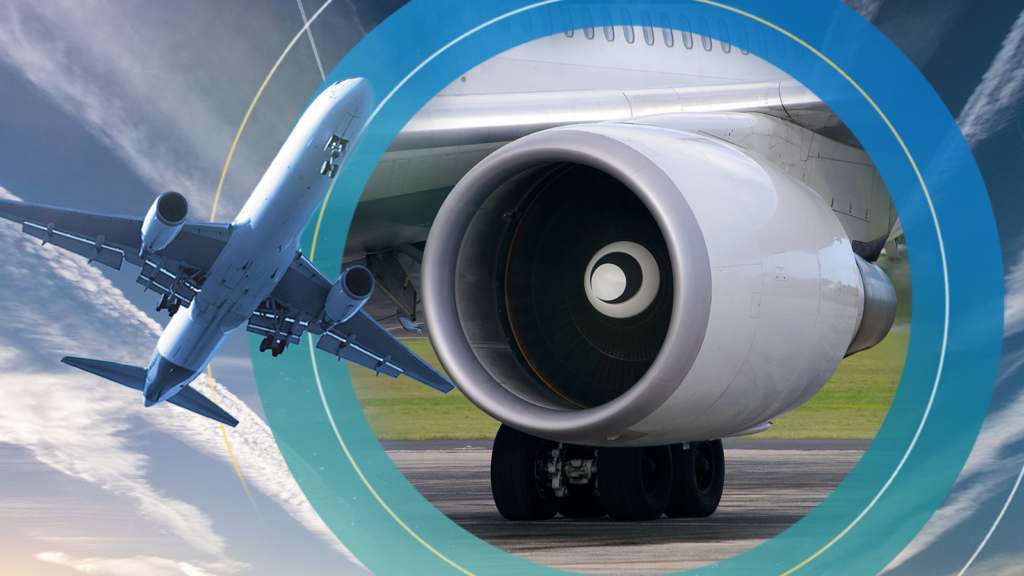‘Jet zero’: Emission free air travel, future-proofing flying or fantasy? | Climate News

“The Jet Zero Strategy is designed to future-proof aviation so passengers can look forward to guilt-free travel.”
That’s the aim of Grant Shapps and the Department for Transport’s new plan, announced this week, to deliver emission-free air travel by 2050. It sounds great for travellers and it’s got a catchy name, but is it too good to be true?
Research by a Cambridge University led group, Aviation Impact Accelerator (AIA), shared with Sky News, shows the scale of the challenge that the government and the global air-travel industry is facing.
Right now, we burn 10 tonnes of jet fuel every second – that’s an Olympic swimming pool every three minutes. To replace this with sustainable aviation fuel would require the current production to be increased by over 1,000 times.
We’ll get to the other obstacles – land-use, electricity-use, new planes and the money, later on.
The plan
There are six key objectives that are meant to ensure that the government’s ambitious 2050 goal is met. There are two that we’re going to look at in more detail, but click on the others for a brief overview of what they entail.
- Improving the efficiency of planes
- Encouraging customers to make green choices
- Capturing and offsetting carbon-dioxide (CO2) emissions
- Dealing with other non-CO2 warming effects of flying
- Using more sustainable fuels
- Zero emission flight
Points 5 and 6 are the ones we’re going to look at in more detail, they involve creating either new fuels or new aircraft.
The industry is currently trying to scale the production of “Sustainable Aviation Fuels”, which are drop-in replacements for fossil jet fuel. These fuels comprise both biofuels, made from either plants or waste biomass streams; and “synthetic” jet fuels, generated from electricity used to make hydrogen from water, and carbon dioxide captured from the air.
In terms of new aircraft, manufacturers are engaged in developing two new types of plane – hydrogen powered and battery powered. Current battery powered aircraft can only fly a few hundred kilometres but hydrogen-powered aircraft are attractive because they could potentially fly any range that jet fuelled aircraft can currently fly.
The government is running a competition with a prize for the first company that can deliver a transatlantic flight with 100% sustainable fuels.
New fuels
One of the tools the AIA has developed is called “Journey Impact Simulator”. It provides detailed estimates of the various impacts that different fuels would have on things like CO2 emissions, land use, electricity demand and monetary cost, for flights in the future.
The tool is backed by technical data from a wide range of industries and has been built by a team of over 60 experts from around the world, led by the University of Cambridge. It’s not been launched yet but they shared some results with us, looking at a flight from London Heathrow to JFK in New York in 2035.
That year is significant because it’s about half way to the 2050 target, and when Airbus say they will have a hydrogen powered aircraft on the market.
After checking through thousands of different technologies, fuels and routes, considering every element involved in production, the best two options the AIA identified to replace jet fuel are green hydrogen and synthetic fuels.
They should be available in significant volume by 2035 and are also two of the methods the government is most interested and prepared to invest in.
Firstly, in terms of climate impact the benefits of moving away from fossil jet fuel are clear.
The alternative fuels don’t entirely remove climate impact, but the reductions are significant. Currently, the climate impact per passenger of a London to New York flight would be equivalent to 27% of the CO2 footprint for a whole UK household for a year. This would drop by almost half to about 15% with either liquid hydrogen or synthetic jet fuels.
The climate impact that remains is mainly caused by non-CO2 effects like contrails. The only net CO2 emissions from the new fuels are from the construction of the equipment needed to produce the fuel – wind turbines, nuclear power stations, electrolysers and aircraft.
But creating these new fuels is incredibly energy intensive.
Producing enough synthetic fuel for a flight from London to New York would use 1.4 times as much energy as a UK household consumes in a year. And that’s for each passenger. For hydrogen it would be about 80% of an annual household electricity budget.
Powering all current aircraft using synthetic fuels would require 40% of the world’s electricity production, or all of the world’s low-carbon renewables and nuclear to be used just on air travel.
That’s partly simply because the amount of jet fuel needed is so large – and partly because making jet fuel from air and water is extremely electricity intensive.
It’s also expensive. The tool predicts that the cost of producing synthetic jet fuel could more than double the price of a ticket. By 2035, in the best case scenario, with low-cost green hydrogen and if hyper-efficient engine technologies can be developed, the cost of fuelling a jet fuel aircraft and a hydrogen aircraft could be similar.
The price could fall due to improvements in efficiency and falling renewable energy prices, but even in the AIA’s absolute best-case scenario they predict that using synthetic jet fuel will result in a 50% increase in the price of a ticket.
The options we’ve seen are those with the lowest climate impact. Another option, which would not reduce the climate impact as much but is cheaper and faster to scale, is biofuels – fuel made from plants.
But these are incredibly land intensive. Generating enough fuel from timber to match today’s annual jet fuel use would require a forest half the size of Europe.
Some biofuels can be made from crops – but replacing our current global appetite for jet fuel with crops would be equivalent to giving every person on the planet an extra 1,500-2,000 calories every day. Additional crop growth on this scale would compete with food production and water use, again just to feed air travel.
What are the solutions?
The AIA says “it’s really important to look at the holistic system – from resource requirements to all the different climate impacts. To keep flying we must work quickly. Our investment and policy decisions must be based on an understanding of the whole aviation sector.”
For some experts, it ultimately comes down to something quite simple – people flying less.
Leo Murray, Director of Innovations at climate action campaign group Possible says that the plans show that “the government has downplayed the scale of the challenge.”
Research by Possible shows that under successive governments the aviation industry has only met one of its targets set since 2000.
“The targets are voluntary and there are no consequences for not meeting them, because they don’t expect them to be met. No one actually anticipates these technological improvements, if they did they wouldn’t have a problem setting a Plan B which holds the industry accountable.
“There is currently no tax on jet fuel or plane tickets, they are in the same category as essentials like wheelchairs and baby clothes. Even tampons have only just gone in that category. Look at the tax we pay for other forms of transport.
“It’s hard for politicians to go back on that and make air travel more expensive, but normal travellers who have one or two family holidays a year aren’t the problem. We don’t want those trips, which are sacrosanct in British culture, to be inaccessible for people on low incomes.
“Business travel isn’t even the problem, that’s one in ten flights and is going down since COVID. The problem is that 15% of people, the highest earners, take 70% of all flights, for holidays. We can charge those people with a frequent flyer levy and try and reduce overall demand for air travel.
“We are just going to have to do less air travel. At this point in time we don’t have plans to meet our climate change commitments.”
A DfT spokesperson said: “We are committed to decarbonising transport, not by stopping people doing things but by helping people to do the same things differently and more sustainably.
“Our analysis suggests that the aviation sector can achieve Jet Zero without the Government needing to intervene directly to limit aviation growth, with net zero targets achieved by focusing on new fuels and technology in a way that mitigates the impacts on wider sustainability.”
Watch the Daily Climate Show at 3.30pm Monday to Friday, and The Climate Show with Tom Heap on Saturday and Sunday at 3.30pm and 7.30pm.
All on Sky News, on the Sky News website and app, on YouTube and Twitter.
The show investigates how global warming is changing our landscape and highlights solutions to the crisis.
The AIA’s Journey Impact Simulator, one of the tools used in this article, will launch publicly later this year. Their Resource to Climate Comparison tool, RECCE, compares different fuels and technologies in 2035 in terms of their climate impact and necessary global resource use and cost, is live on the AIA’s website.
The Data and Forensics team is a multi-skilled unit dedicated to providing transparent journalism from Sky News. We gather, analyse and visualise data to tell data-driven stories. We combine traditional reporting skills with advanced analysis of satellite images, social media and other open source information. Through multimedia storytelling we aim to better explain the world while also showing how our journalism is done.
Why data journalism matters to Sky News

Recent Comments